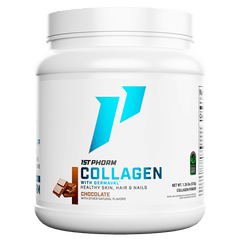Eccentric Contractions and Activation of Recovery
Many people resistance train to get stronger, bigger and leaner. Every exercise performed as part of your workout consists of two phases: a concentric phase and an eccentric phase. The concentric phase is when the muscle is getting shorter throughout whatever exercise you are completed. It is also described as a situation when the force produced inside your muscle is greater than the amount of resistance put forth by the weight you are lifting. The eccentric phase is basically the opposite; these contractions occur during the part of the exercise when the muscle is getting longer. Moreover, the force applied by the external item (typically a barbell, dumbbell, etc.) is greater than the amount of force generated inside the muscle being exercised.
Eccentric contractions are able to produce greater levels of force and for this reason; muscle damage and soreness are attributed to this type of contraction. This is one of the main reasons why going for a one hour run typically produces more soreness than riding an elliptical or cycle for the same amount of time. Running requires a series of eccentric contractions, particularly if you go downhill, while elliptical or cycling typically do not contain as powerful of eccentric contractions.
Interestingly, scientists have told us that eccentric contractions are most responsible for some of the positive changes which occur inside our muscles that are responsible for an eventual increase in our muscle mass (Adams 2004). A recent study in the February 2013 issue of Medicine and Science in Sports and Exercise had nine recreationally active young men perform a bout of eccentric muscle contractions using their thigh muscles (Cermak 2013). The exercise bout was intended to generate great amounts of force and resulted in soreness and damage to the muscle. Muscle biopsies were collected before and after this exercise bout and these muscle samples were analyzed for changes in a type of cell closely linked to recovery and hypertrophy.
For the first time, the authors reported that greater numbers of these cells were activated in our muscle fibers that are much better at generating strength and power (Cermak 2013). These results tell us that completing workouts which contain eccentric contractions are an important consideration to make sure muscle activation and recovery occurs in response to the exercise bout. Fortunately, traditional forms of resistance training all contain a concentric and an eccentric period, which means most people already complete these important types of contractions. In conclusion, performing exercises and workouts which contain significant amounts of forceful muscle-lengthening contractions result in excellent activation of your muscle while also stimulating increases in detailed parts of muscle which can help improve hypertrophy and recovery.
REFERENCES
Adams, G.R., D.C. Cheng, F. Haddad and K.M. Baldwin (2004). “Skeletal muscle hypertrophy in response to isometric, lengthening, and shortening training bouts of equivalent duration.” J Appl Physiol 96(5): 1613-1618.
Cermak, N.M., T. Snijders, B.R. Mckay, G. Parise, L.B. Verdijk, M.A. Tarnopolsky, M.J. Gibala and V.a.N.L. Lj (2013). “Eccentric Exercise Increases Satellite Cell Content in Type II Muscle Fibers.” Med Sci Sports Exerc 45(2): 230-237.












